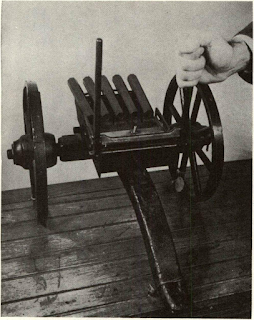One of the best guns to see service was little spoken
It used an open chamber, a cylinder the chambers
President Lincoln was originally persuaded to order
In December of , J. D. Mills, representing Carr
The general considered the price of $2,300 too high,
McClellan considered that 50 of the Mills guns
Estimated cost of iron and woodwork of one Union
IRON
384 chambers, at 87Vi cents ............. 336.00
.
The first Union repeating gun from Carr & Avery
. Mr. Mills’ first sample gun remained in an accounting limbo until finally paid for on August 3,
It used an open chamber, a cylinder the chambers
President Lincoln was originally persuaded to order
In December of , J. D. Mills, representing Carr
The general considered the price of $2,300 too high,
McClellan considered that 50 of the Mills guns
Estimated cost of iron and woodwork of one Union
IRON
Two cast steel barrels ................... $30.00
Sights ..................................................................6.00
Cylinder ..............................................................18.00
Slide, and fixtures pertaining thereto ..............33.00
Fitting-up castings ............................................25.00
Elevating screw and box ..................................4.00
Shield ..................................................................4.00
Hopper ................................................................6.00
Charging tool (loader) ......................................5.00
Irons for woodwork ........................................60.00
Tools and implements ......................................4.00
16 brass boxes ..................................................16.00 $547.00
.
WOOD
Four wheels..................................24.00
One limber, with chest ...........20.00
One carriage..................................20.00
Two linen covers for chests 1.50 65.50
Total....................................................................$612.50
Add twenty percent ............ ......122.50
$735.00
That these guns saw active service is beyond question, but their influence, as with the Gatlings and the The first Union repeating gun from Carr & Avery
. Mr. Mills’ first sample gun remained in an accounting limbo until finally paid for on August 3,



Comments
Post a Comment